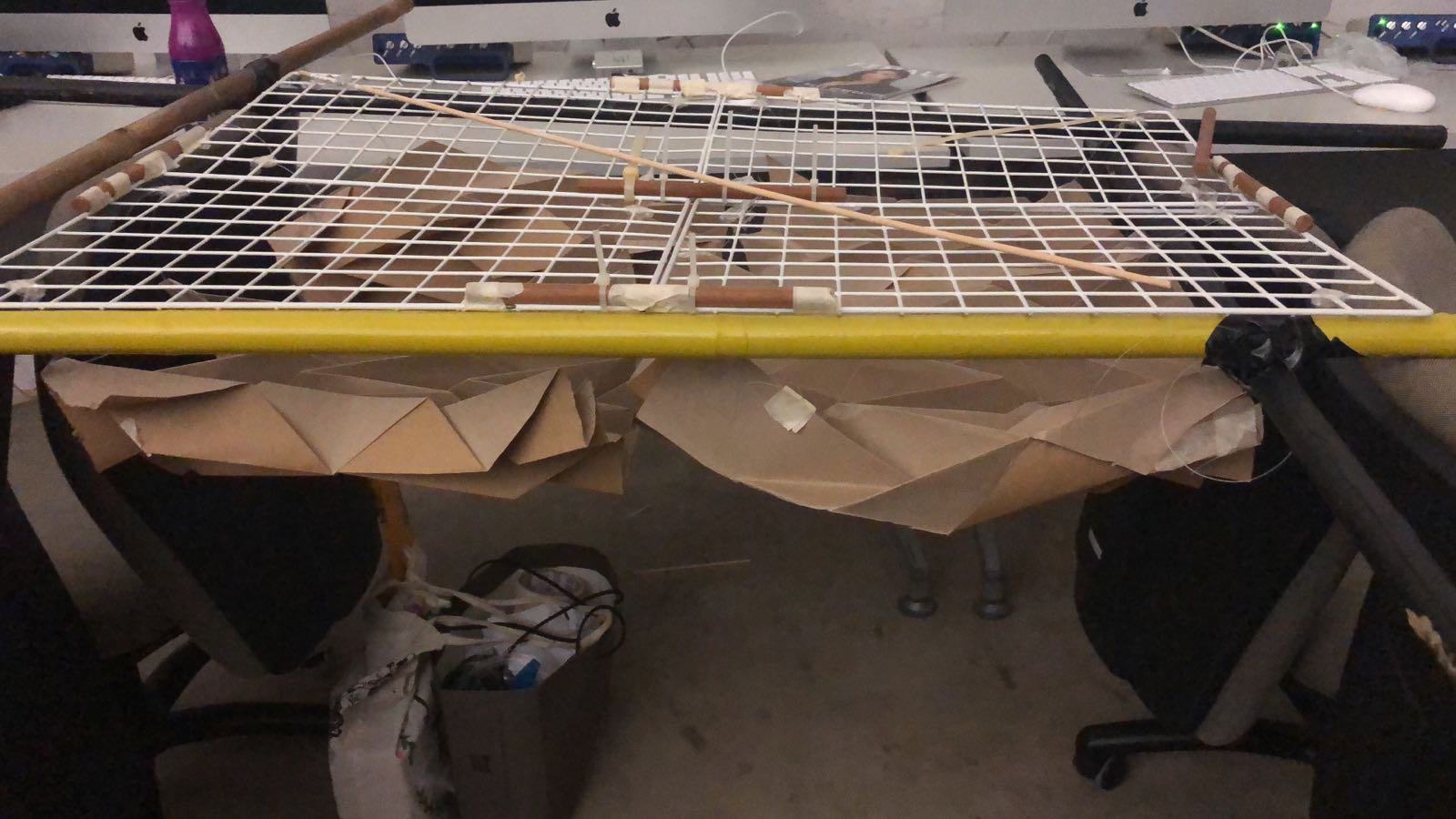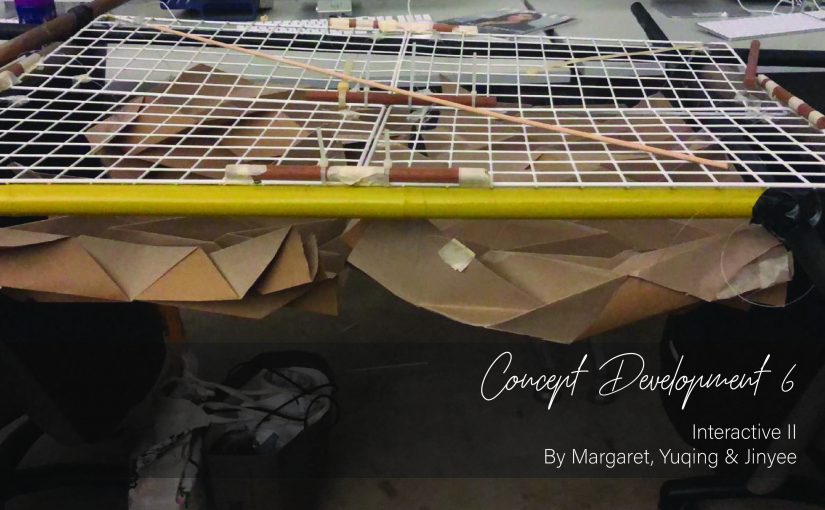3rd April (consultation)
After presenting our mini prototype through the video last week. We officially started our journey to start the testing out our project. The problem we faced was the feasibility to move the paper in order to create a movement. Due to the weight and the inability to secure the motors we decided to do a few things. So we had to think about a few obstacles to cross.
They are:
– To test to see how many motors we require to create movement in the structure
– To get the motors to connect to Max MSP via Arduino
– To test out the paper weight and the material needs
– To see if we can control 4 motors with one Arduino
For our first meet up we tested the effect on a smaller paper. Now we upsized it and made it bigger to test and see if it will even move. Our plan is to make it move in a structured way. To ensure that people can see a “ripple” or at least a wave effect. Attached below is the video of the movement of the paper using 4 motors.
To achieve a more drastic effect, we connected the center of the brown paper tessellations to a servo motor with an ice cream stick using a fishing line.
We are quite happy with it as there is an obvious drastic moment created by the center portion being pulled up and down quite drastically. HOWEVER we realised the beautiful drastic movements only looked good from the top view. From the bottom-up view, there was barely any visible movements or change in the way the tessellations work.
We felt that the giant paper structure is not capable of the kind of effect that we are looking for (due to its weight) so we decided to scrape it.
Slight change in idea
We are still going for the ripple effect metaphor and we decided that there must be a better way out there to represent the effect more effectively.
We decided to cut the brown paper tessellations up into smaller pieces. Each smaller piece of tessellation now represents a region. As a whole, the papers would look like one big tessellation. The ripple effect will occur by the camera sensing where the audience is standing at via blob motion region. It will cause the corresponding small panel on top of the audience to shake vigorously. The next circular line of surrounding panels will shake as well with medium vigour, and a third circular line of surrounding panels will shake vaguely. There is now a physical representation of the ripple effect.

After consulting , we realised that we will need to start working on the motion region as well as the motors working. Prof suggested we use Phidgets to control the motors. So for the next meeting we are going too test out the codes and the way we desire for it to move according to where the person is underneath it.

